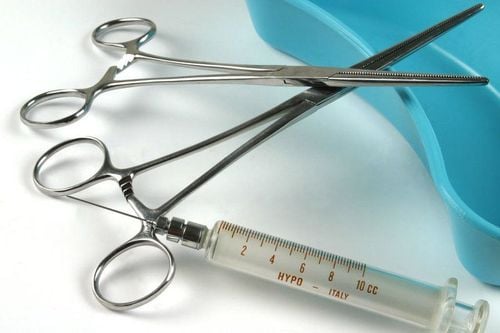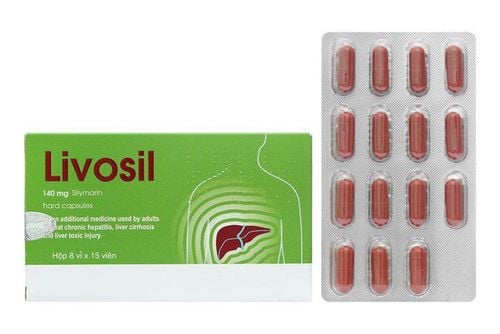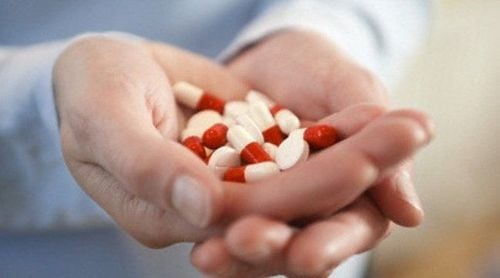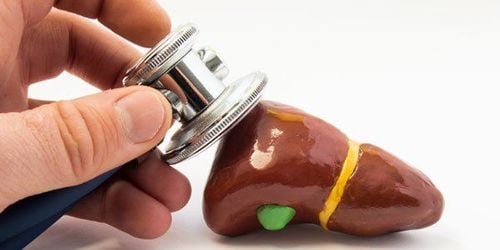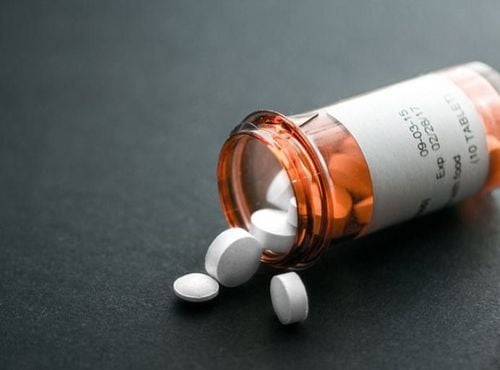This is an automatically translated article.
When the liver shows abnormal symptoms, the doctor will order a liver biopsy. This is the method that gives the most accurate results to serve as a basis for the doctor to diagnose the patient's liver disease.1. Definition of liver biopsy
Liver biopsy is a medical procedure performed with a biopsy needle to aspirate a small piece of liver parenchyma for testing (liver cells will be cut out for viewing under a microscope). Test results for the doctor to monitor some problems such as cirrhosis, metabolic disorders in the liver, viral hepatitis or liver cancer diagnosis.
2. Liver biopsy helps to identify what disease?
The liver plays a role in the production of proteins and enzymes that are responsible for many essential metabolic processes, removing harmful substances from the blood, fighting infections, and storing essential vitamins and nutrients for the body. It can be said that the liver is an organ that plays many important roles in the body.
When the liver shows abnormal symptoms, the doctor will order a liver biopsy to help determine liver diseases such as:
Cirrhosis Hepatitis Hepatitis Liver Tumor: Need to do a liver tumor biopsy in case, the results liver test results are normal but liver tumor is detected or persistent fever of unknown cause Liver cancer: In this case, imaging tests cannot differentiate.
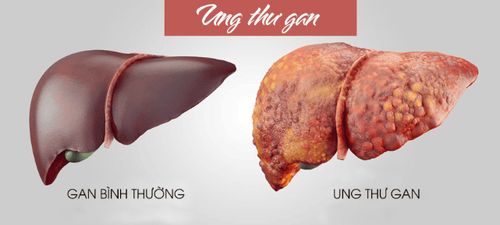
Sinh thiết gan giúp xác định bệnh ung thư gan
Liver biopsy may also be used to diagnose or monitor a number of disorders, including:
Alcoholic liver disease Autoimmune hepatitis Chronic hepatitis (b or c) Iron overload Liver disease Nonalcoholic fatty liver disease Primary cholestatic cirrhosis Wilson's disease (inherited liver disease).
3. Is a liver biopsy dangerous?
Liver biopsy is a fairly safe procedure, but in rare cases, complications can still occur. Unwanted complications of liver biopsy may be:
Pain: Pain at the biopsy site is the most common complication, but it is quite mild, usually lasting 5 - 20 minutes. If the patient feels uncomfortable, the doctor may prescribe pain medication Bleeding: Bleeding may occur after a liver biopsy. Most cases can be treated medically. Severe bleeding may require a longer hospital stay for a blood transfusion or surgery to stop the bleeding, but this complication is rare. Infection: Very rarely, bacteria can enter the abdominal cavity or enter the bloodstream. In this case, the doctor will give the patient antibiotics Injury to adjacent organs: very rarely, for example, the biopsy needle can be poked into the gallbladder or into the lung during the biopsy Allergic to Lidocaine ( local anesthetic).
4. Procedure for performing a liver biopsy
There are two ways to perform a liver biopsy:
Using a biopsy needle to remove a small piece of liver parenchyma through the skin on the right chest and abdomen: The doctor disinfects the skin and the patient needs to lie on his back or side left (because the liver is located under the ribs and diaphragm, in the upper right abdomen).
The site where the needle is inserted into the biopsy will be injected with anesthetic. The doctor then pushes a special hollow needle through the skin into the liver. Because the patient is anesthetized, the patient does not feel pain but can still feel the force of pushing the needle in.
Because the liver moves up and down when inhaling - exhaling, when performing needle insertion and withdrawal, the doctor will ask when the patient needs to hold his breath and the time to hold his breath is 5-10 seconds. The drawn needle contains a small liver sample.
The doctor uses the ultrasound machine to know exactly where the liver needs to be biopsied, so that the hollow needle is in the right place. Ultrasound is painless.
Liver biopsy through the neck vein or another location: Some cases of liver disease do not synthesize clotting substances, leading to heavy bleeding after the biopsy. The doctor will use a tube (catheter, a very small hollow tube) passed through a vein in the neck or groin (the doctor numbs the skin here before the procedure) to gently push along the blood vessels to the liver. The tip of the tube has a fine needle attached to it to penetrate a blood vessel into the liver tissue and collect a liver sample. A small liver sample will be taken out of the body through a tube.
Biopsy by second procedure reduces the possibility of bleeding when the patient has hemophilia problems. In the remaining cases, liver biopsy followed the first procedure. The doctor will discuss with the patient the best and most appropriate way to do it.
5. What to prepare before a liver biopsy?
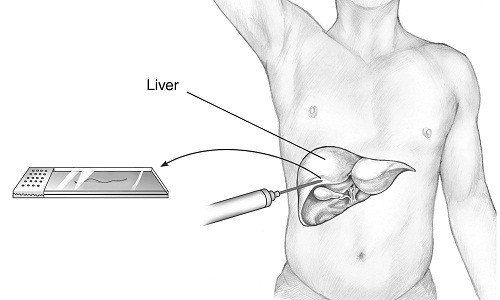
Sinh thiết gan
Before performing a liver biopsy, the doctor will assign the patient to have a blood test before the biopsy to check if the blood clotting is normal, to ensure that there is not much bleeding after the biopsy.
Patients are advised to stop taking medications that affect blood clotting, such as aspirin or warfarin, one week before the biopsy. The doctor will usually ask what medications the patient is taking before the biopsy.
Not drinking alcohol or eating for eight hours before the procedure is also an important precaution for patients before liver biopsy. In addition, the patient should go with friends or relatives to have someone take them home while in poor health after the biopsy.
Biopsy results are usually available in a week. Your doctor will talk to you about these results and figure out the best course of treatment.
Currently, Vinmec International General Hospital is one of the medical facilities with a team of leading medical experts in the field of Liver - Gallbladder - Pancreas, the most modern machinery in the region. These will be good conditions to make the examination, screening tests or biopsy to diagnose liver cancer quick, convenient, and time-saving so that appropriate and timely treatment measures can be taken. time.
Please dial HOTLINE for more information or register for an appointment HERE. Download MyVinmec app to make appointments faster and to manage your bookings easily.




